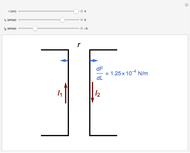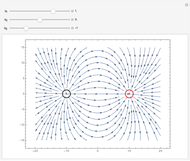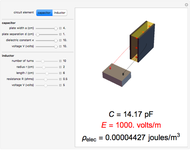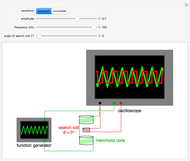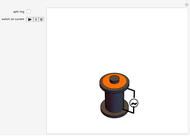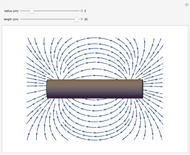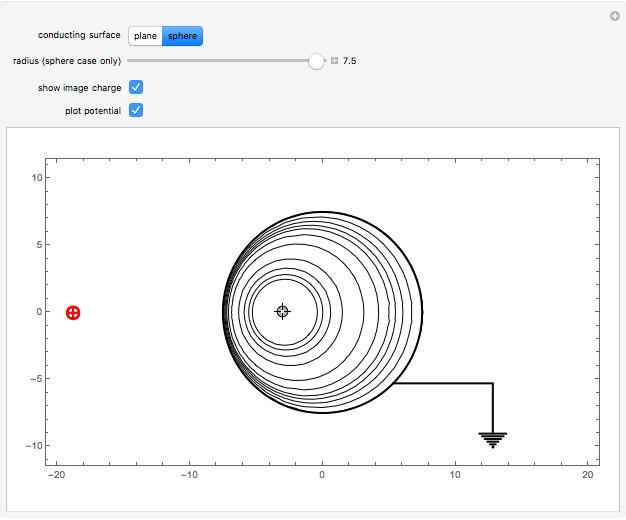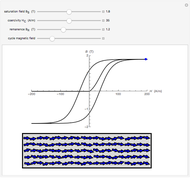Maxwell's Displacement Current

Requires a Wolfram Notebook System
Interact on desktop, mobile and cloud with the free Wolfram Player or other Wolfram Language products.
According to Ampere's law, the line integral of the magnetic field  around a closed loop equals the total free current passing through the loop:
around a closed loop equals the total free current passing through the loop:  . In the Demonstration graphic, magnetic lines of force are shown as blue loops while the free electric current is shown as a red arrow. Ampere's law can be expressed in differential form as
. In the Demonstration graphic, magnetic lines of force are shown as blue loops while the free electric current is shown as a red arrow. Ampere's law can be expressed in differential form as  , where
, where  is the current density. The vector identity
is the current density. The vector identity  implies the steady-state limit of the equation of continuity:
implies the steady-state limit of the equation of continuity:  . Maxwell recognized that the more general form of the equation of continuity
. Maxwell recognized that the more general form of the equation of continuity  , where
, where  is the charge density, requires a modification of Ampere's law. Substituting from the first of Maxwell's equations,
is the charge density, requires a modification of Ampere's law. Substituting from the first of Maxwell's equations,  , Ampere's law can be generalized to
, Ampere's law can be generalized to  , which becomes the third of Maxwell's equations. The added term is known as the displacement current since it involves the rate of change of the dielectric displacement
, which becomes the third of Maxwell's equations. The added term is known as the displacement current since it involves the rate of change of the dielectric displacement  . This provides a mechanism whereby a time-varying electric field can create a magnetic field, complementary to Faraday's law, in which a time-varying magnetic field can produce an electric field. What Maxwell called the "mutual embrace" of electric and magnetic fields can produce propagating electromagnetic waves. This would not be possible without the displacement current.
. This provides a mechanism whereby a time-varying electric field can create a magnetic field, complementary to Faraday's law, in which a time-varying magnetic field can produce an electric field. What Maxwell called the "mutual embrace" of electric and magnetic fields can produce propagating electromagnetic waves. This would not be possible without the displacement current.
Contributed by: S. M. Blinder (March 2011)
Open content licensed under CC BY-NC-SA
Snapshots
Details
Snapshot 1: Ampere's law for steady currents
Snapshot 2: a capacitor in the circuit can accumulate charge on its plates; the resulting displacement current can also act as a source of a magnetic field
Snapshot 3: a capacitor filled with a dielectric material can increase the charge densities on the plates for a given voltage
Permanent Citation
"Maxwell's Displacement Current"
http://demonstrations.wolfram.com/MaxwellsDisplacementCurrent/
Wolfram Demonstrations Project
Published: March 7 2011






